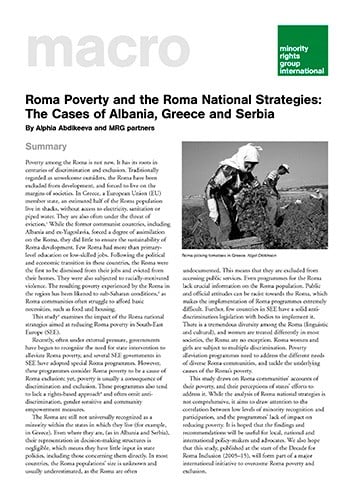Roma in Serbia
Updated June 2015
£15/month
Related content
Reports and briefings
-
1 September 2005
Roma Poverty and the Roma National Strategies: The Cases of Albania, Greece and Serbia
This study examines the impact of the Roma national strategies aimed at reducing Roma poverty in South-East Europe.
-
8 January 2003
Roma in Serbia: Introducing Romany Language and Culture into Primary Schools
Roma communities throughout Europe suffer systematic racial discrimination. Their language and culture has been marginalized, with…
Events
-
 Video on demand
Video on demand 9 August 2021 • 3:00 – 5:00 pm BST
Stanislav Tomáš and the plight of European Roma – Gwendolyn Albert
In June 2021, Stanislav Tomáš, a Romani man in Teplice, Czech Republic, died after several police officers pinned him to the ground and…
-
Our strategy
We work with ethnic, religious and linguistic minorities, and indigenous peoples to secure their rights and promote understanding between communities.
-
-

